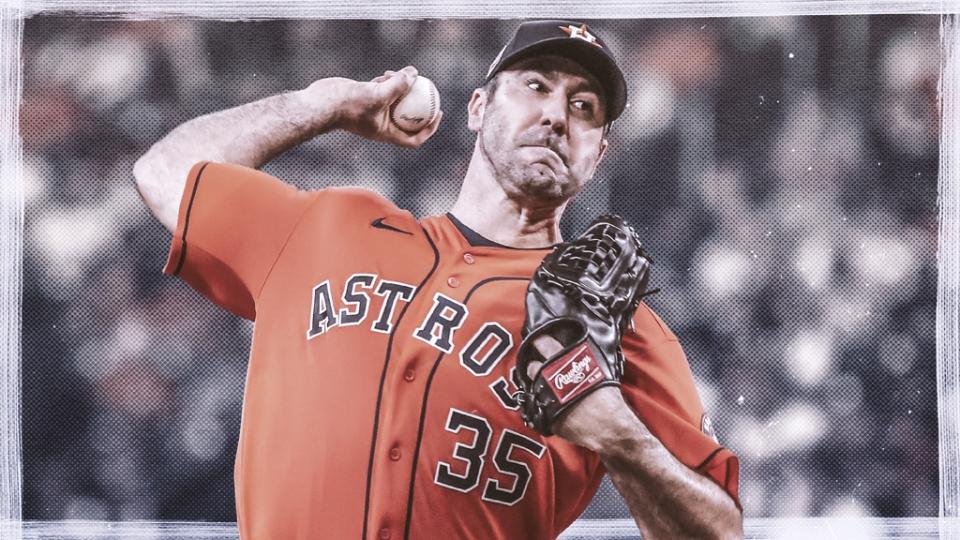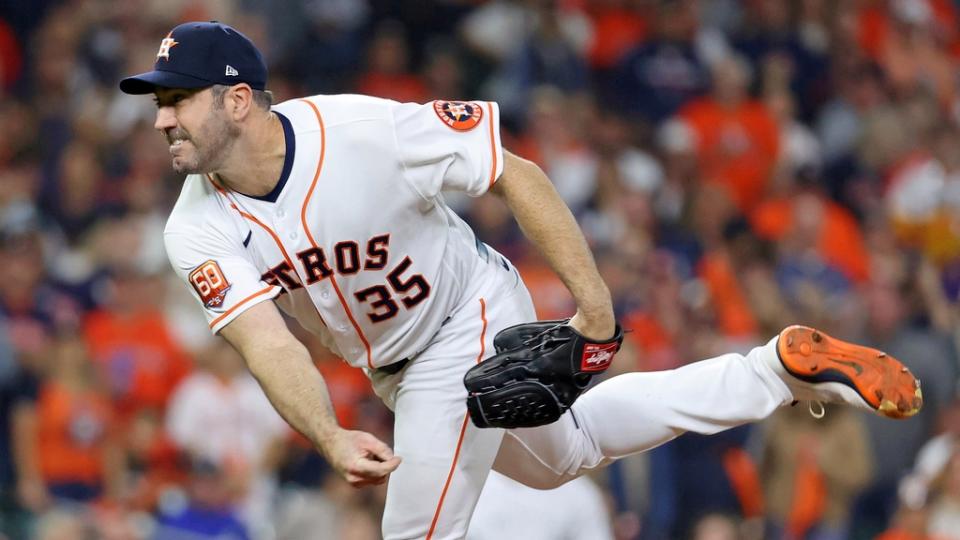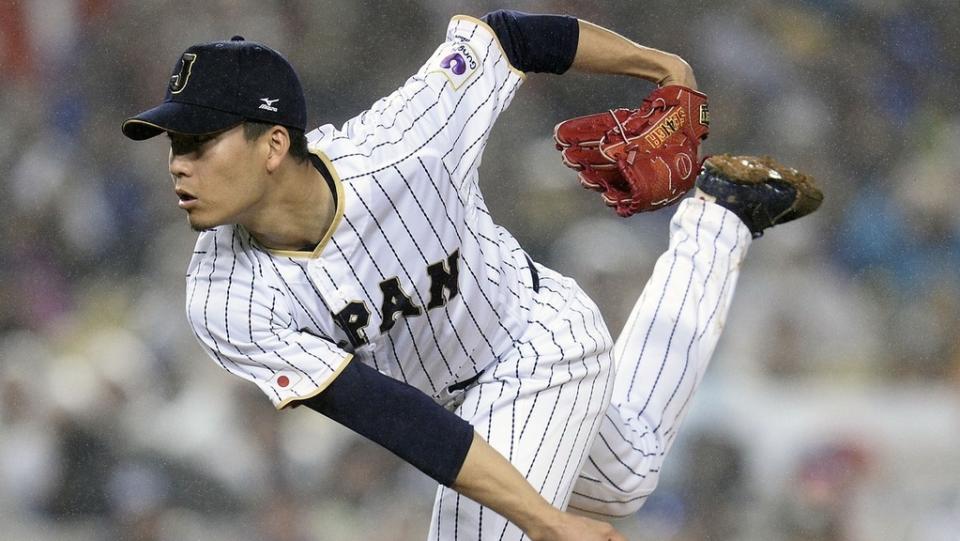
With Jacob deGrom leaving the Mets to sign a massive five-year deal with the Texas Rangers, and doing it before the Winter Meetings, he in effect did New York a big favor.
Instead of GM Billy Epplerthe rest of the front office, and owner Steve Cohen having to focus on a potential resolution with deGrom, they were able to quickly go about replacing him — and they did so on Monday by inking Justin Verlander to a two-year deal with a third-year vesting option, as first reported by SNY’s Andy Martino.
Before the Mets signed Verlander, there were lots of fans out there who wanted nothing to do with him because he’s about to turn 40 years old. I thought that was ridiculous, and obviously still feel that way.
Yes, Verlander is older, but he is not your average 40-year-old athlete. He is coming off a Cy Young award during what was arguably his best season.
And there is absolutely no sign that Verlander is about to fall off a cliff.
Verlander’s average fastball velocity in 2022 (95.1 mph) was higher than it was before he had Tommy John surgery (94.9 mph in 2020) and higher than his career average (94.4 mph).
What Verlander did last season was not a fluke.
Can he sustain it?
I’ve been writing for weeks about the deGrom vs. Verlander vs. Carlos Rodon debate, and have been of the opinion that the best risk was Verlander. I was comfortable with the Mets offering three years at $40 million or more for deGrom, which they did, but felt that the clear option if deGrom left was to turn to Verlander.

I suggested trying to lock up Verlander with a high average annual value deal for two guaranteed years that contained a vesting option for a third year, and that’s exactly what they did. If it took guaranteeing the third year to get the deal done, I would’ve done it. But it didn’t come to that.
If the Mets missed on Verlander, I would not have turned to Rodon. But they didn’t miss. They acted decisively. And because of that, the Mets again have two aces atop their rotation just a few days after everything was thrown into flux with the departure of deGrom.
Before discussing what’s next, let’s explore just how dominant Verlander was for the Houston Astros last season.
Verlander was almost unbelievably good, leading the league in ERA (1.75), WHIP (0.829), ERA+ (220), and hits per nine (6.0).
Verlander’s stuff in his first year back from Tommy John surgery was still nasty, and he dialed it up to the high-90s when needed. Meanwhile, his slider, curve, and changeup were right where they’ve always been in terms of average velocity. Verlander’s advanced stats were also incredibly good, so what he did in 2022 was not a mirage.
It’s also fair to argue that Verlander missing most of 2020 and all of 2021 due to TJS could benefit him over the next season or two, since he doesn’t have two seasons of extra mileage on his arm.
Like Scherzer, Verlander is a bulldog on the mound and one of the most intense competitors in baseball. That should play well in New York on a win-now team.
It should also be noted that unlike Rodon, Verlander was not attached to the one-year qualifying offer. Had the Mets signed Rodon, they would have lost their second-round and fifth-round picks in the 2023 MLB Draft, and lost $1 million of international bonus money. That would’ve been aa big deal.
Now, with Verlander in tow, what should be next?

With starting pitching still a need (the Mets’ current rotation consists of Scherzer, Verlander, and Carlos Carrasco), I’d favor a run at Kodai Senga or another lower-tier starter while steering clear of Jose Quintana.
Senga comes with some risk, but he also has top of the rotation upside. And with Verlander now on board, the Mets can afford to take a chance on Senga while gambling on that upside. If he winds up fitting in more towards the back end of the rotation, they’ll be just fine.
The Mets should also be trying hard to re-sign Brandon Nimmo while exploring potential center field replacements, including the recently DFA’d Cody Bellinger.
It is hard to overstate the importance of Nimmo to the Mets. And with the Verlander deal being for just two years guaranteed, they should be able to find a way to fit Nimmo on a team that has only a shade over $90 million dedicated to the payroll in 2025.
Following deGrom’s departure, the Mets (who were right not to come anywhere close to offering what the Rangers did) needed to get aggressive — especially after operating in a timid fashion during last year’s trade deadline. They did that with Verlander, and need to continue in the coming days and weeks.
To be clear, this isn’t about making splashes for the sake of it. It’s about making the team better or — at the very least — not getting worse.
With the signing of Verlander, the Mets are well on their way to putting themselves in position to be one of the best teams in baseball in 2023 following a 2022 where they won 101 games. And there is probably much more action to come.